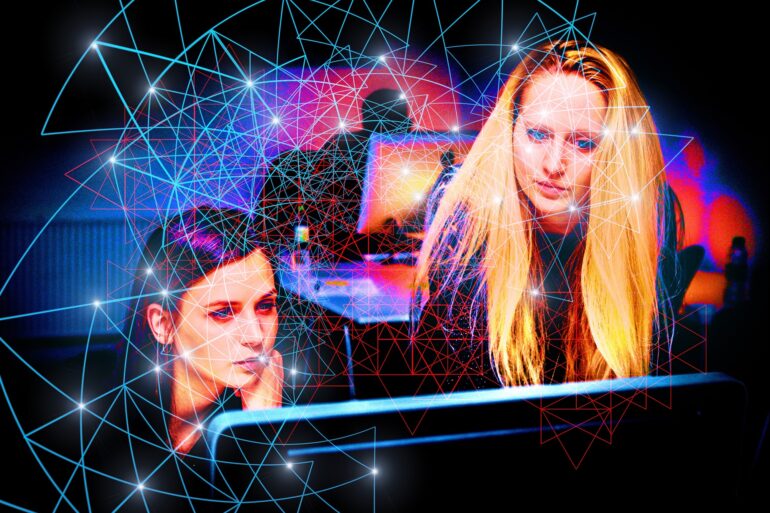TL;DR:
- Machine learning and crowdsourced intelligence are shaping the future of problem-solving and decision-making.
- Machine learning algorithms analyze data and extract insights, while crowdsourced intelligence taps into the collective wisdom of diverse individuals.
- Combining both approaches can provide innovative solutions across various domains.
- Machine learning has limitations, such as the need for high-quality training data.
- Crowdsourced intelligence can address these limitations by providing diverse perspectives and reducing biases.
- Crowdsourcing can assist in data labeling, feature engineering, and model evaluation, enhancing the accuracy and robustness of machine learning models.
- The integration fosters a cycle of continuous improvement through user feedback.
- Sharing internet resources, such as through platforms like Honeygain, can aid in data collection for machine learning while providing incentives for users.
Main AI News:
In the fast-paced digital landscape of today, the convergence of machine learning and crowdsourced intelligence has emerged as a powerful force, revolutionizing the way organizations solve problems and make critical decisions. With machine learning algorithms wielding the ability to extract valuable insights from massive datasets, and crowdsourced intelligence tapping into the collective wisdom of diverse individuals, businesses can now leverage this dynamic duo to unlock innovation and drive progress across various domains.
The Rise of Machine Learning and its Boundaries
Machine learning, a branch of artificial intelligence, empowers computers to learn from data and autonomously make predictions or decisions. By employing sophisticated algorithms, machine learning systems can detect patterns, identify anomalies, and generate invaluable insights from intricate datasets. Industries such as healthcare, finance, manufacturing, and marketing have all experienced groundbreaking transformations as organizations harness the power of machine learning to drive informed decision-making and operational efficiency.
Despite its impressive capabilities, machine learning is not without limitations. One of its significant challenges lies in the availability of high-quality training data. For machine learning models to generalize patterns and make accurate predictions, they heavily rely on robust data sets. Insufficient or biased data can lead to flawed outcomes and reinforce existing biases. This is precisely where the complementary nature of crowdsourced intelligence comes into play.
The Crowdsourcing Revolution
Crowdsourced intelligence involves harnessing the collective knowledge, opinions, and efforts of a large group of people to solve problems or make decisions. By tapping into the diverse perspectives and expertise of individuals from various backgrounds, organizations can gain a comprehensive understanding of complex issues. Online platforms and social networks have made crowdsourcing increasingly accessible, enabling businesses to engage a vast pool of contributors from all corners of the globe.
Integrating crowdsourced intelligence into machine learning workflows allows organizations to overcome the limitations posed by training data and enhance the accuracy and robustness of their models. Crowdsourcing can be leveraged in different stages of the machine learning process, including data labeling, feature engineering, and model evaluation. For instance, when training a machine learning model to recognize images, crowdsourcing can be employed to annotate and label vast datasets, ensuring a diverse range of perspectives and minimizing biases. Similarly, crowdsourced feedback and evaluations can offer valuable insights into model performance and help pinpoint areas for improvement.
Furthermore, the fusion of machine learning and crowdsourced intelligence facilitates a cycle of continuous improvement. As machine learning algorithms make predictions and decisions, feedback from users and contributors can be collected and integrated back into the system. This iterative feedback loop allows models to adapt and evolve, continuously enhancing their accuracy and effectiveness over time. By harnessing crowdsourced intelligence, organizations can tap into the collective wisdom of the crowd, continuously refining their machine learning solutions and remaining at the forefront of a rapidly evolving landscape.
Additionally, providing users with the opportunity to contribute their device resources can significantly bolster machine learning endeavors. For example, platforms like Honeygain enable users to share their internet traffic, thereby aiding in data gathering for machine learning activities. In return, users can earn passive income, creating a mutually beneficial arrangement. Users receive three credits for every 10 MB of traffic shared passively, and 1000 credits are equivalent to $1. Once users accumulate at least $20 worth of credits, they can request a payout. This crowdsourced internet resource, coupled with fair compensation, facilitates data collection with user incentives, fostering a collaborative approach that benefits everyone involved.
The Recipe for Success
The harmonious integration of machine learning and crowdsourced intelligence has yielded numerous success stories across diverse domains. In the healthcare field, researchers have harnessed machine learning algorithms to analyze medical images and detect diseases, while crowdsourced intelligence has been instrumental in validating and enhancing the accuracy of these models. In the business realm, companies have utilized machine learning to enhance customer segmentation, while crowdsourcing has provided valuable feedback and domain expertise to optimize marketing strategies.
However, it is essential to acknowledge the challenges associated with this integration. Ensuring the quality and reliability of crowdsourced contributions, addressing privacy and security concerns, and managing the scalability of the crowdsourcing process are among the key considerations. Organizations must implement robust mechanisms to verify the accuracy and consistency of crowd-contributed data, establish clear guidelines, and provide incentives to foster meaningful participation.
Conclusion:
The integration of machine learning and crowdsourced intelligence presents significant implications for the market. Businesses that leverage these approaches can gain a competitive edge by harnessing the collective intelligence of diverse contributors and refining their machine learning solutions. This combination allows for deeper insights, more accurate predictions, and continuous improvement over time. By embracing the power of synergy between machine learning and crowdsourced intelligence, organizations can drive innovation, enhance decision-making processes, and stay ahead in today’s rapidly evolving business landscape.

